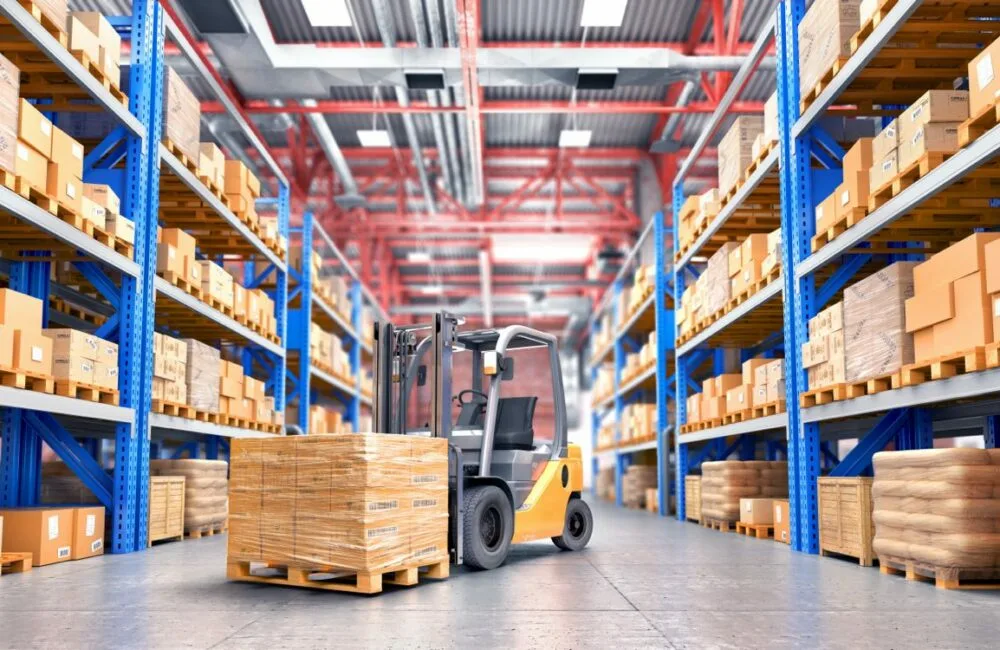Tubed packaged goods are a cornerstone of modern product packaging, offering an efficient way to store and dispense a wide variety of products, includ
Tubed packaged goods are a cornerstone of modern product packaging, offering an efficient way to store and dispense a wide variety of products, including cosmetics, pharmaceuticals, foodstuffs, and industrial materials. Their widespread popularity stems from their unique design and material advantages, which enhance consumer convenience, product safety, and brand appeal.
This article delves into the detailed design principles behind tubed packaging, the manufacturing processes, quality control, and how these factors affect consumer experience and market success.
Must visit: trustedhealthcare

Understanding Tubed Packaged Goods: An Overview
Tubed packaging refers to flexible or semi-rigid containers shaped as cylinders or flattened tubes, designed primarily to hold viscous, semi-solid, or paste-like products. Unlike rigid containers, tubes allow for easy squeezing and controlled dispensing, making them a preferred option for personal care, pharmaceutical ointments, adhesives, and food pastes.
Typically made from plastic, aluminum, or multi-layer laminates, tubes come in various sizes and forms depending on the product and target consumer market.
The Importance of Design in Tubed Packaging
1. Ergonomics and Usability
One of the most crucial aspects of tubed packaging is its ergonomic design. Tubes must fit comfortably in the hand, enabling easy squeezing and controlled product release. Factors such as tube diameter, length, flexibility, and cap design all influence user experience.
For example, tubes for facial creams often have smaller diameters and soft, squeezable walls to allow precise dispensing. Conversely, industrial adhesive tubes tend to be sturdier with wider openings to dispense larger quantities.
2. Material Selection and Barrier Properties
Selecting the appropriate material is critical to ensure product safety and longevity:
- Plastic Tubes: Offer flexibility, lightweight properties, and cost-effectiveness. Polyethylene (PE) and polypropylene (PP) are commonly used plastics with good chemical resistance.
- Aluminum Tubes: Provide excellent barrier protection against oxygen, moisture, and light, essential for sensitive products such as pharmaceuticals and paints.
- Laminated Tubes: Combine plastic and aluminum layers to balance flexibility and barrier properties, widely used in cosmetics and food packaging.
The material choice affects not only the protection of the product but also the tube’s environmental footprint and recyclability.
3. Closure Systems
Closures such as screw caps, flip-tops, or dispensing nozzles must complement the tube design. A good closure prevents leakage, maintains product freshness, and allows ease of use.
Innovations like airless pumps and child-resistant caps are enhancing tube functionality, especially for medical or hazardous products.
4. Aesthetic and Branding Elements
Packaging is a key marketing tool. Tubes provide a broad surface area for vibrant printing, embossing, or labeling to showcase branding and product information. Custom shapes, color schemes, and finishes (matte, glossy, metallic) enhance shelf appeal.
Brands often leverage the tube’s tactile qualities, using soft-touch coatings or textured surfaces to improve consumer engagement.
Manufacturing Process of Tubed Packaged Goods
1. Tube Production
The tube body can be manufactured using different methods based on the material:
- Extrusion (Plastic Tubes): Molten plastic is extruded into tubes, which are then cut to size.
- Impact Extrusion (Aluminum Tubes): A slug of aluminum is shaped into a tube using high-pressure impact.
- Lamination: Multiple layers of plastic and aluminum foil are bonded together for laminated tubes.
2. Printing and Decoration
After forming, tubes undergo printing processes to apply branding and regulatory information:
- Flexographic Printing: Common for plastic tubes, offers vibrant colors and fast turnaround.
- Offset Printing: Often used for aluminum tubes, providing high-quality images and text.
- Hot Stamping and Embossing: Add decorative elements or tactile branding features.
3. Filling and Sealing
Automated filling machines dispense the product into each tube with precision to avoid contamination and ensure consistency. Post-filling, tubes are sealed:
- Heat Sealing: Common for plastic tubes, the open end is sealed by applying heat and pressure.
- Crimping: Aluminum tubes are sealed by folding and crimping the end.
Caps or closures are then added and tightened to finalize packaging.
4. Quality Control
Throughout manufacturing, rigorous quality checks occur:
- Leak Testing: Ensures sealed tubes do not allow product leakage.
- Fill Volume Verification: Confirms each tube contains the correct amount of product.
- Print Inspection: Verifies label clarity, color accuracy, and registration.
- Physical Testing: Checks tube strength, flexibility, and cap security.
Quality assurance ensures product safety and customer satisfaction.
Consumer Impact of Tubed Packaged Goods
1. Convenience and Accessibility
Tubed packaging excels in consumer convenience. It is easy to open, use, and store. The ability to dispense small quantities reduces waste and ensures product longevity.
The flexibility of tubes makes them ideal for consumers with limited hand strength or dexterity, such as elderly users or children.
2. Hygiene and Product Integrity
Tubed packaging reduces contamination risks since the product inside is not exposed to air or direct contact. This is particularly important for pharmaceutical ointments and skincare products where hygiene is critical.
Many tubes incorporate airless designs or tamper-evident features, increasing consumer trust.
3. Portability
The lightweight and compact form factor of tubes allows for easy transportation, making them a favorite for travel kits, sample products, and on-the-go use.
4. Environmental Considerations
Consumers increasingly demand sustainable packaging. Tubes’ environmental impact depends on the materials used. Brands are adopting recycled plastics, mono-material tubes, and refillable options to reduce their carbon footprint.
Recyclability and biodegradability are critical factors influencing purchasing decisions, especially among environmentally conscious consumers.
Applications of Tubed Packaged Goods
1. Personal Care and Cosmetics
Toothpaste, facial cleansers, moisturizers, sunscreens, and makeup products are commonly packaged in tubes. The controlled dispensing mechanism enhances user experience and product efficacy.
2. Pharmaceuticals
Ointments, topical creams, and gels use tubed packaging to ensure sterility, protection from contamination, and precise dosage.
3. Food Industry
Products such as tomato paste, mayonnaise, mustard, and cheese spreads utilize tubes to maintain freshness and allow easy application.
4. Industrial and Household Products
Adhesives, sealants, lubricants, and paints are packaged in tubes for convenience, controlled application, and storage.
Emerging Trends in Tubed Packaging Design and Manufacturing
1. Sustainable Packaging
The push for sustainability is driving innovation in material science and tube design. Brands are exploring:
- Mono-material Tubes: Simplify recycling by using one type of plastic.
- Refill Systems: Reduce waste by allowing consumers to refill existing tubes.
- Bio-based Plastics: Use renewable resources to produce biodegradable tubes.
2. Smart Packaging Integration
Digital technologies enhance consumer engagement with tubes:
- QR Codes and NFC Tags: Provide product information, authenticity checks, and marketing content.
- Sensors and Indicators: Monitor freshness, temperature, or usage.
3. Customization and Personalization
Advances in printing allow for limited editions, personalized labels, and small-batch runs, fostering deeper consumer-brand connections.
4. Improved Dispensing Technologies
Airless tubes, pump systems, and precision nozzles are evolving to meet specific consumer needs, such as minimizing product waste or enabling medical-grade dosing.
Challenges in Tubed Packaging
Despite many advantages, tubed packaging faces some obstacles:
- Recycling Difficulties: Multilayer laminated tubes complicate recycling, requiring new processing technologies.
- Manufacturing Costs: Advanced tubes with specialty coatings or smart features can increase costs.
- Consumer Education: Some consumers are unaware of proper disposal or recycling methods for tubes.
- Compatibility Issues: Certain products may degrade or react with tube materials if not carefully matched.
Future Outlook for Tubed Packaged Goods
The future of tubed packaging is shaped by consumer expectations, regulatory pressures, and technological advances:
- Sustainability will remain a top priority, driving adoption of recyclable materials and refillable formats.
- Innovation in materials and dispensing mechanisms will enhance usability and product protection.
- Digital Integration will deepen consumer interaction with packaging.
- Global Market Growth will continue, particularly in emerging economies with expanding middle classes and urbanization.
Brands and manufacturers that embrace these trends will lead the industry, delivering products that are not only functional and attractive but also socially responsible.
Frequently Asked Questions (FAQs)
Q1: What are the main materials used in tubed packaging?
A: Plastic (PE, PP), aluminum, and laminated composites combining plastic and aluminum layers are the most common materials.
Q2: How do airless tubes benefit consumers?
A: Airless tubes prevent air exposure, reducing contamination and extending product shelf life, ideal for sensitive skincare and pharmaceuticals.
Q3: Are all tubes recyclable?
A: No. Mono-material tubes made from a single plastic type are recyclable, but multilayer laminated tubes are often not recyclable with current facilities.
Q4: How do manufacturers ensure product quality in tubed goods?
A: Through leak testing, volume control, print quality inspection, and physical durability testing.
Q5: Can tubes be customized?
A: Yes, tubes offer excellent customization options including printing, embossing, color, shape, and size variations.
Q6: What industries benefit the most from tubed packaging?
A: Personal care, pharmaceuticals, food products, and industrial adhesives are key users.
Conclusion
Tubed packaged goods combine thoughtful design, advanced manufacturing, and consumer-centric features to meet diverse market needs. Their ability to deliver convenience, hygiene, and portability makes them indispensable in today’s fast-moving consumer environment.
As innovation drives new materials, dispensing technologies, and smart packaging, tubed goods will continue to evolve. Sustainable practices and digital engagement will play central roles in shaping the future of tubed packaging, ensuring it remains a preferred choice across industries worldwide.
For brands and manufacturers, investing in design excellence and environmentally responsible solutions will not only satisfy consumer demands but also contribute positively to the planet’s future.




COMMENTS